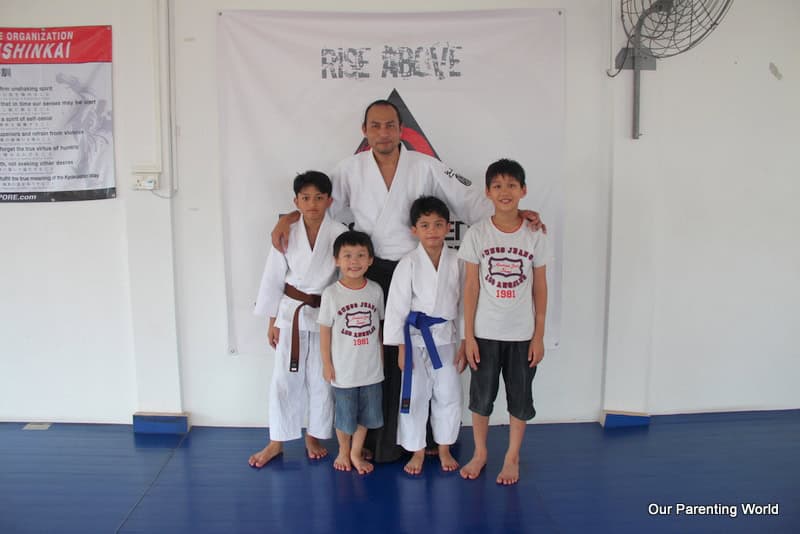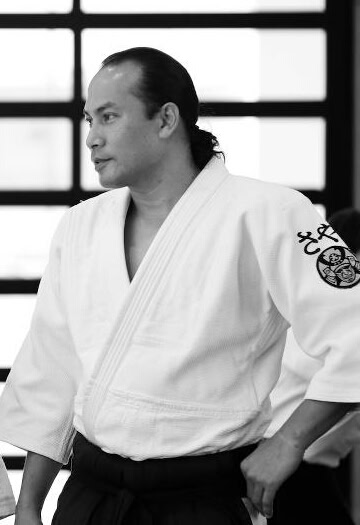
Photo Credit: Impact Aikido
{Media Invite and Interview with Sensei Syed Ismail}
Martial Arts classes have been increasingly popular over the years in Singapore and how would you decide which martial arts and martial arts schools to learn for yourself and for your children? Our Parenting World (OPW) team visited Impact Aikido located within Transcendence Mixed Martial Arts School, it is the first ‘fight-gym’ that embraces the culture of ‘martial art school’, injecting and cultivating the core values of ‘traditional martial arts’. It offers mixed martial arts and competitive sports such as BJJ, Boxing, Judo, Karate, MMA, Muay Thai and Wrestling.
Aikido is a Japanese martial arts developed by Morihei Ueshiba whose goal was to create an art that practitioners could use to defend themselves while also protecting the well-being of the attacker from injury. Participants learning Aikido will gain the benefit of learning applicable self-defense techniques, spiritual enlightenment, physical health or peace of mind.
Our Parenting World is very honoured to interview Sensei Syed Ismail (4th Dan) who is the Founder and Chief Instructor of Impact Aikido.
1) Sensei, please share with us what influenced and inspired you to take up Aikido?
Why Aikido? Because it’s more of a ‘new art’ and I’m intrigued to explore it. Aikido has set its roots in Singapore much earlier before I stumbled upon it, like many others, through a movie that showcase the application of aikido. The moves were different and ‘new’. After some searching, I came about my 1st school, Aikido/Aikikai Singapore. I was ‘lucky’ to received guidance from the pioneer aikido masters there. Later through the years, these Senseis dispersed and started their own schools. I see these as a positive change, as only now there are more options and variations of aikido schools/dojos. Our late aikido master, Morihei Ueshiba (also known as O’Sensei), have said “expand and share the art” and “search and find your true self when the time comes”. These words have different meanings and are subjective to each individual’s aim. Aikido is a non-competitive art and this has played an important part in my selection. I was searching for something to ‘discipline’ myself but not to fuel my aggression. I found that in Aikido after all these years has ascertained my choice.
2) How did you get started with Impact Aikido? What are the specific focuses in teaching Aikido in your school?
A journey in everything has its ups and downs, and my journey in aikido has it turbulence when I am seeking my own path. I have evolved my direction and style of aikido and focused a lot on dynamism and practicality in the application of aikido techniques. This is compared to my previous sensei that taught the slow ‘kata-based’ (set movements) techniques only. I still do this with my students, but I injected an important element in any martial arts, a sense of ‘realism’! Basics are important too but we cannot run away from a situation when reality checks on us, or having achieved a higher rank but completely in doubts. The responsibilities of a ‘Sensei’ or ‘Teacher’ are very heavy. IMPACT Aikido was formed when I had an opportunity to have a class in a fight gym ‘FightworksAsia’. The owner was a nice and humble man and I owed to him a lot on the ‘birth’ of IMPACT Aikido. We are the first perhaps; a ‘traditional’ martial art dojo in a ‘fight gym’ that prepares fighters for amateurs and professional competition combats sports. Through him and the training ground, I see strong fires from individuals working hard for their goals regardless of ‘ranks’ and this at times is sadly missing in traditional dojos. This ‘chapter’ of my journey sets a strong precedence and affirmed my message to focus my energy to press on.
3) Can you share with us what are some of the most memorable moments in teaching Aikido to your students?
In martial arts, memorable moments would easily be a student who started from ‘zero’ and who has turned into a skillful and disciplined person with good character. These are almost a ‘standard’ pattern and expected from every student, because that is the true essence of ‘embracing’ martial arts. Yes, I have these experiences, but those that are sweetest are the ones that are the most challenging. I have had students that are ‘physically-challenged’, with troubled motor-skill and some with autism. To train them and to be able to set their mind ‘free’ and build their confidence are very difficult tasks. But it shed tears of happiness to me several times. No words to explain that sense of achievement, to see them standing proud and victorious at performing an easy technique that they have just learned but in the beginning it might seem an almost impossible for them.
4) What advice would you give to parents with children who are keen to learn martial arts? When is the right age to start?
One strong advise is, never force the children into something that they refused. It would safe the frustrations to all 3 parties (parents, children/student & sensei/teacher). The best way is to allow the kid to experience the class’s trial. If they are excited and happy about the class, then proceed. It is very important that if the sensei injects discipline in the training and the student at home, must carry out the practices too, like respecting their parents and elders. There’ll be flaws if amongst the 3 are not doing their part, but results will be encouraging if they do.
What’s the right age? It’s always a debate to some. In my class, if the kid is able to listen and follow instructions regardless of age, I welcome them. It does not matter if they do it incorrectly, but most importantly they are trying and adjusting themselves towards the techniques. What’s the adults see and execute are not the same as the children. Yes…they will play at times but these are tolerated in children mindset. I will normally ‘focus’ on their break falls and agility and groom them towards the understanding of the techniques first before the art in depth. At 6 years old would be a good age to start as they have developed a good sense of understanding from explanations and taking orders, but I’ll give exception to younger ones subjectively.
5) What are the benefits of learning Aikido for both children and adults?
The benefits of learning any martial arts are good discipline and physical well-being, if it’s ‘cultivate’ correctly. This however is ‘subjective’ to each individual’s target. Then again an art that has ‘No’ competition would incline towards a calmer inner-self than those that feeds on aggression. Aikido has such elements. It is non-competitive and welcomes everyone regardless of their age, ranks or physical ability, to embrace this beautiful art. In IMPACT Aikido, each student is guided and trained within their abilities and targets. ‘No Pain, No Gain’ …they say, and Yes…there’ll be such moments, but it will always be within ‘Safety’. WE take pride in our class and guidance, to ensure the students escalate their training with satisfaction, happiness and a good strong bonding.
Thank you Sensei Syed Ismail for taking our interview!
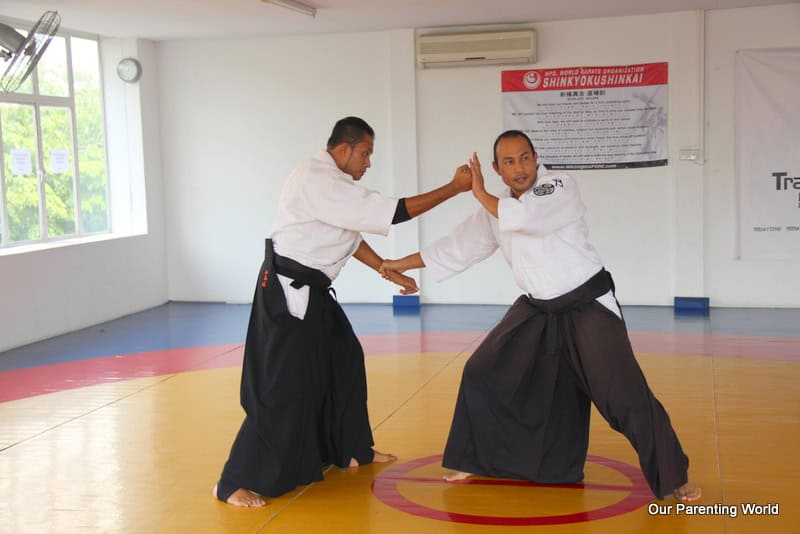
At Impact Aikido, classes are held on Sundays. Sensei Syed Ismail will demonstrate the movements and explain the strokes step by step to the students before they break into groups to practice it.
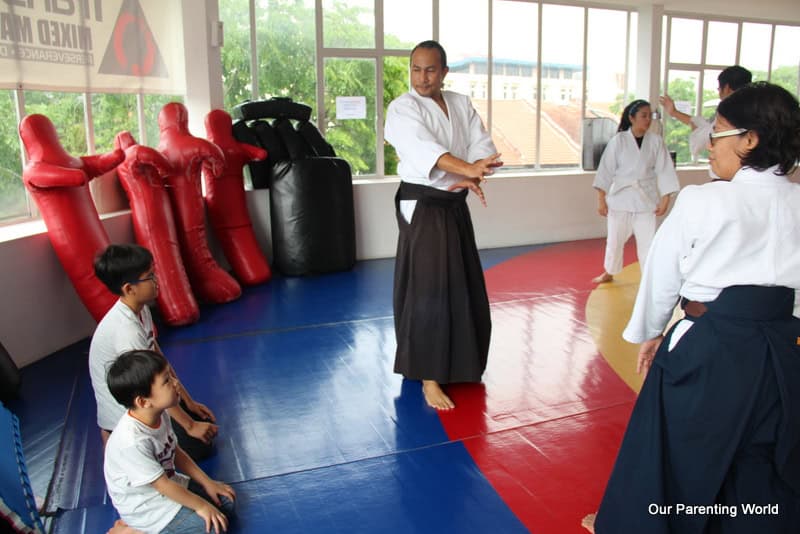

Aikido’s techniques and defense movements mostly dwells in ‘immobilization locks and throws. This is the first time the boys have taken any form of martial arts and they picked up quickly under the guidance and watchful eyes of Sensei Syed Ismail.
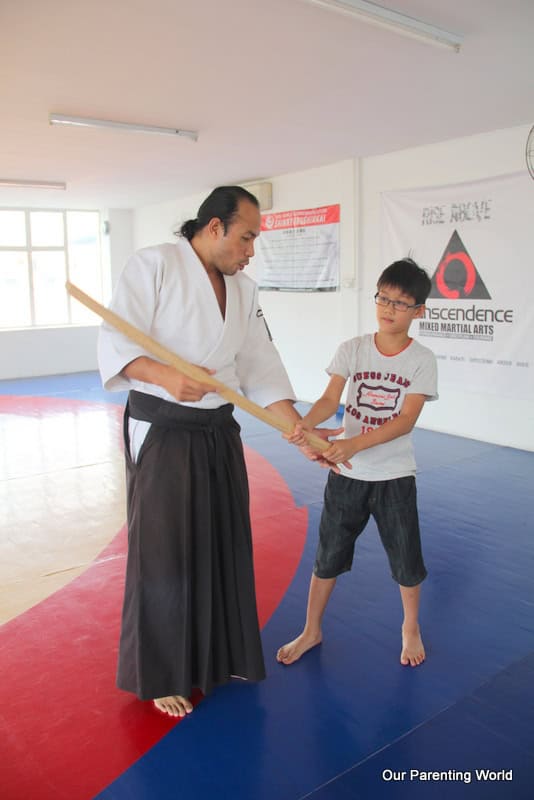
The boys learnt many Aikido strokes from Sensei Syed Ismail which include experience the first main lock of Aikido called ‘Ikyo’ (an arm-lock). They learnt about a catch called ‘Aihami’, which is one-hand catch across to the defender, attacker’s right hand to the defender’s right hand and vice-versa. The other is from a strike called ‘Shomenuchi’ which is the strike (chop) to the forehead. Both can be done in ‘seiza’ (sitting down) and standing up.
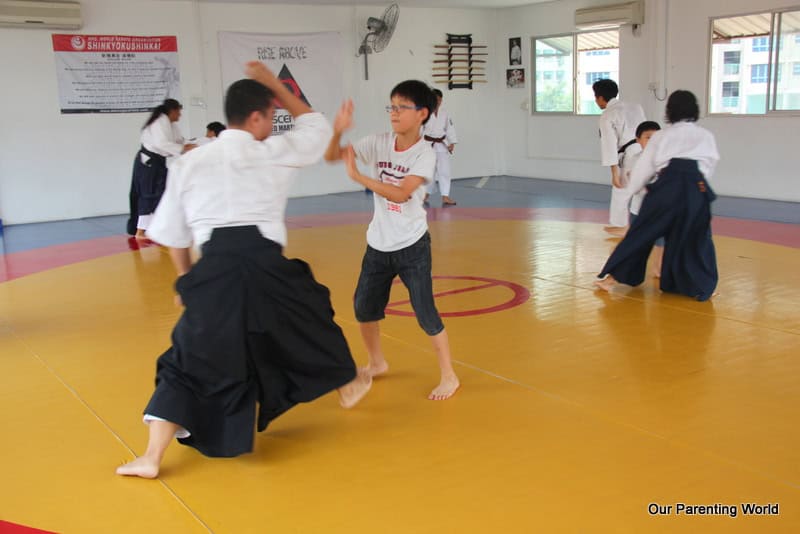
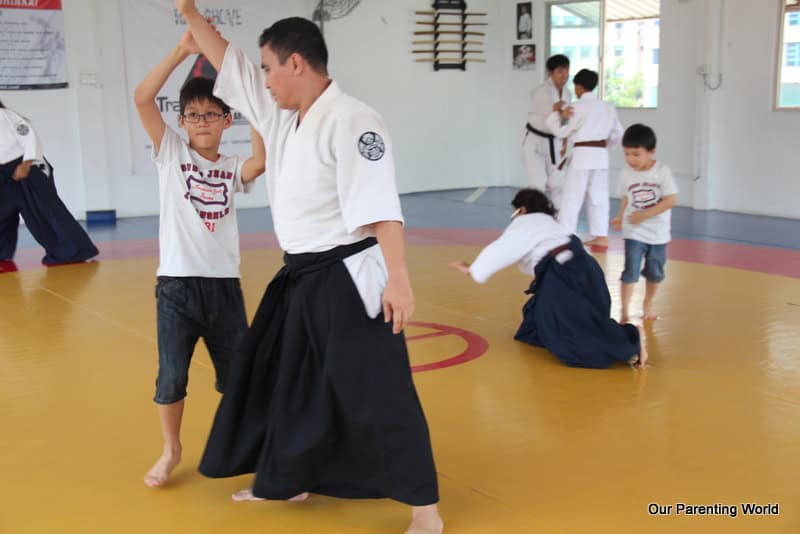
After learning the strokes, the boys get to practice together with the adults. Over at Impact Aikido, one of the unique aspects is children and adults train together which creates a strong sense of ‘family camaraderie’ atmosphere.
Looking at the boys’ excited and determined faces when practising the strokes, we feel that this will help to increase the child’s confidence, self-esteem, learn to co-operate and develop teamwork skills when he has to spar with the adults and this will also further enhance his martial arts skills.
The last part of the class called (free exercise / simulation) where Sensei Syed Ismail will make the seniors or ‘sempais’ simulate a fast pace attacks onto the selected students for them to exercise their ‘self-defense’. These are crucial for the students to adjust or adapt into the realism of the scenarios and sharpen their focus and sense of judgement in timing, regardless of their age but accordingly to their own abilities.
Sensei strongly emphasized that ‘We take the importance of safety seriously in training’.

Photo together with Sensei Syed Ismail with his two boys and OPW boys.
Sensei Syed Ismail is patient, passionate and energetic in his teachings and we enjoyed our lessons with him. The boys have fun learning and practicing with Sensei and the students both children and adults at Impact Aikido.
There are many benefits of learning martial arts for children and adults. It helps to improve your health, keep fit, learn to focus, develop self-discipline, increase your self confidence and gain self-esteem, improve social skills and many more.
At Impact Aikido, you can learn Aikido in a supportive, nurturing and healthy learning environment under Sensei Syed Ismail suitable for children and adults. You can learn practical self-defense skills at the same time it will help to improve your health and spiritual well-being.
Try out Aikido for yourself at Impact Aikido and for more information, please visit Impact Aikido’s website at http://www.impactaikido.com

